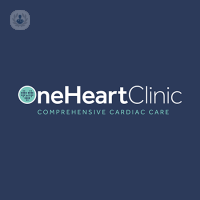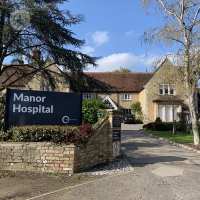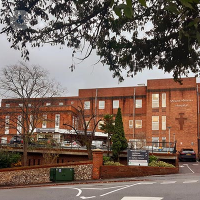What is a coronary CT?
A coronary CT scan or coronary CT angiogram (CCTA) is an imaging test used to examine the condition of the arteries and other blood vessels coming in and out of the heart.
CT stands for computerised tomography. This scans utilise X-ray images taken from multiple angles to produce a complete cross-section of the body part that needs examining – in this case, the heart and its adjoining blood vessels. These detailed images can be reformatted into 3D images on a computer, allowing the doctor to examine the structures inside the body.
What does a coronary CT angiogram involve?
Before the scan, your doctor may make you take beta blockers to slow your heart rate in order to get clearer images from the scan.
The CT technician will usually give you numbing medication to make the procedure more comfortable. Then, contrast dye will be delivered via an IV line. This will make the heart and its arteries more visible in the images.
Electrodes are placed on the chest to monitor heart rate. You then lie on a long table that slides into the CT machine. You may be asked to keep your arms raised above your head and/or to hold your breath for several seconds while the images are taken in order to take the clearest possible images.
The actual scan is over very quickly, generally taking around 15 minutes, give or take, but taking into account the preparation time, including injecting the dye, the whole procedure can take over an hour.
Why is a coronary CT done?
A coronary CT scan can be used to test for a number of conditions, but it is primarily used to diagnose coronary artery disease by checking for blocked or narrowed arteries in the heart. It can also detect:
- Calcium build-up in the coronary arteries
- Problems with the aorta
- Problems with heart function, including heart valves
- Pericardial disease
Preparation for a coronary CT scan
It is advisable to wear comfortable, loose-fitting clothing to your coronary CT scan. You will have to remove any metal objects from your person, including jewellery, piercings, dentures, hearing aids, and bras with metal underwire, as metal can affect the images.
If contrast dye is going to be used (as it often is), you may be asked not to eat or drink anything a few hours before the scan.
You should inform your doctor of any medication you are taking, any long-term illnesses you have, any allergies you have, and if there is a chance you might be pregnant.
What to expect during a coronary CT scan
The intravenous contrast dye may give a warm sensation for a minute or two after being injected, possibly along with a metallic taste in the mouth.
The scan itself is usually very straightforward, but those of a nervous disposition, patients suffering from claustrophobia, or those with chronic pain may find it difficult to stay still in the CT machine. In these cases, the doctor and technician may administer medication to help the patient relax.
The patient is usually alone in the room while the scan is performed, except for in special circumstances.
What do abnormal results mean?
You are able to resume your daily activities after the scan is complete, and the results are usually ready very quickly. Your doctor will go over the results with you.
If the images from the coronary CT scan indicates that you have a heart condition, your doctor will discuss treatment options and any steps or lifestyle changes you can take to improve your heart health.
06-20-2013 09-29-2023Coronary CT
Dr Konrad Grosser - Cardiology
Created on: 06-20-2013
Updated on: 09-29-2023
Edited by: Karolyn Judge
What is a coronary CT?
A coronary CT scan or coronary CT angiogram (CCTA) is an imaging test used to examine the condition of the arteries and other blood vessels coming in and out of the heart.
CT stands for computerised tomography. This scans utilise X-ray images taken from multiple angles to produce a complete cross-section of the body part that needs examining – in this case, the heart and its adjoining blood vessels. These detailed images can be reformatted into 3D images on a computer, allowing the doctor to examine the structures inside the body.
What does a coronary CT angiogram involve?
Before the scan, your doctor may make you take beta blockers to slow your heart rate in order to get clearer images from the scan.
The CT technician will usually give you numbing medication to make the procedure more comfortable. Then, contrast dye will be delivered via an IV line. This will make the heart and its arteries more visible in the images.
Electrodes are placed on the chest to monitor heart rate. You then lie on a long table that slides into the CT machine. You may be asked to keep your arms raised above your head and/or to hold your breath for several seconds while the images are taken in order to take the clearest possible images.
The actual scan is over very quickly, generally taking around 15 minutes, give or take, but taking into account the preparation time, including injecting the dye, the whole procedure can take over an hour.
Why is a coronary CT done?
A coronary CT scan can be used to test for a number of conditions, but it is primarily used to diagnose coronary artery disease by checking for blocked or narrowed arteries in the heart. It can also detect:
- Calcium build-up in the coronary arteries
- Problems with the aorta
- Problems with heart function, including heart valves
- Pericardial disease
Preparation for a coronary CT scan
It is advisable to wear comfortable, loose-fitting clothing to your coronary CT scan. You will have to remove any metal objects from your person, including jewellery, piercings, dentures, hearing aids, and bras with metal underwire, as metal can affect the images.
If contrast dye is going to be used (as it often is), you may be asked not to eat or drink anything a few hours before the scan.
You should inform your doctor of any medication you are taking, any long-term illnesses you have, any allergies you have, and if there is a chance you might be pregnant.
What to expect during a coronary CT scan
The intravenous contrast dye may give a warm sensation for a minute or two after being injected, possibly along with a metallic taste in the mouth.
The scan itself is usually very straightforward, but those of a nervous disposition, patients suffering from claustrophobia, or those with chronic pain may find it difficult to stay still in the CT machine. In these cases, the doctor and technician may administer medication to help the patient relax.
The patient is usually alone in the room while the scan is performed, except for in special circumstances.
What do abnormal results mean?
You are able to resume your daily activities after the scan is complete, and the results are usually ready very quickly. Your doctor will go over the results with you.
If the images from the coronary CT scan indicates that you have a heart condition, your doctor will discuss treatment options and any steps or lifestyle changes you can take to improve your heart health.
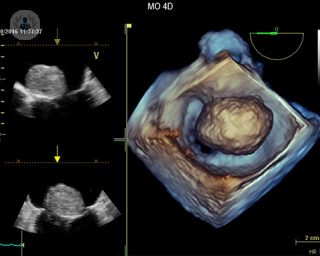

Echocardiogram – Part 3: Types of heart scan
By Dr Allan Harkness
2024-11-21
How does a doctor look inside your chest at your heart? How can a cardiologist check that all the chambers, blood vessels and valves are working properly? How are heart problems found? Top cardiologist Dr Allan Harkness concludes his series on echocardiograms with this guide to the different scans used to monitor heart health. See more
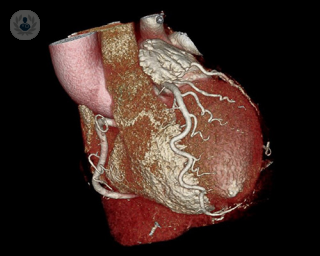

How to prepare for a Coronary CT
By Dr Allan Harkness
2024-11-21
Expert cardiologist Dr Allan Harkness has been using coronary CT for over a decade and explains why it's the go-to-test for patients with chest pain and how to prepare for the procedure. See more
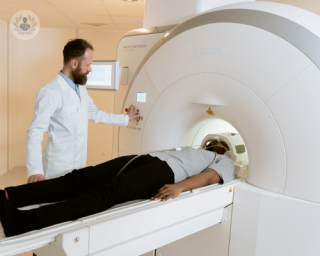

CT coronary angiogram: what do you know?
By Dr Iqbal Malik
2024-11-20
Sometimes a CT coronary angiogram (CTCA) may be necessary to check out the heart. When is it appropriate, who can have it, and what should you expect? Dr Iqbal Malik, a leading cardiologist, has detailed this essential information and answered the basic questions about CT coronary scans. See more
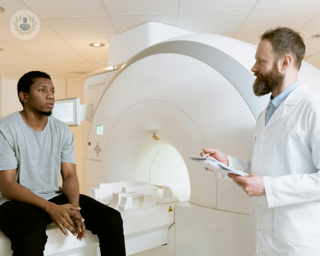

Coronary CT scan: Risks and benefits
By Dr Thomas Heseltine
2024-11-20
Here to discuss the risks and benefits of the coronary CT imaging test, is leading consultant cardiologist Dr Thomas Heseltine. See more
Experts in Coronary CT
-
Dr Allan Harkness
CardiologyExpert in:
- Chest pain
- Palpitations
- Coronary CT
- Echocardiogram
- Pacemaker
- Heart failure
-
Dr Scott Murray
CardiologyExpert in:
- Cardiovascular Medicine
- Coronary CT
- Coronary heart disease
- Preventive cardiology
- Atherosclerosis
- Chest pain
-
Dr Ravi Assomull
CardiologyExpert in:
- Heart check up
- MRI
- Preventive cardiology
- Sports cardiology
- Coronary CT
-
Dr Thomas Heseltine
CardiologyExpert in:
- Cardiac MRI
- Coronary CT
- Imaging diagnostic system
- Heart failure
- Hypertension (high blood pressure)
- Chest pain
-
Dr James Briggs
Interventional radiologyExpert in:
- Fibroids
- Prostate artery embolisation
- Benign prostate enlargement
- Coronary CT
- Biopsy
- Ultrasound
- See all

One Heart Clinic - Cardiology Consulting & Diagnostic Centre
One Heart Clinic - Cardiology Consulting & Diagnostic Centre
68 Harley Street, Marylebone
No existe teléfono en el centro.
By using the telephone number provided by TOP DOCTORS, you automatically agree to let us use your phone number for statistical and commercial purposes. For further information, read our Privacy Policy
Top Doctors

The Manor Hospital - part of Circle Health Group
The Manor Hospital - part of Circle Health Group
Church End, Biddenham, Bedford MK40 4AW
No existe teléfono en el centro.
By using the telephone number provided by TOP DOCTORS, you automatically agree to let us use your phone number for statistical and commercial purposes. For further information, read our Privacy Policy
Top Doctors

Mount Alvernia Hospital - part of Circle Health Group
Mount Alvernia Hospital - part of Circle Health Group
Harvey Road, Guildford GU1 3LX
No existe teléfono en el centro.
By using the telephone number provided by TOP DOCTORS, you automatically agree to let us use your phone number for statistical and commercial purposes. For further information, read our Privacy Policy
Top Doctors
-
One Heart Clinic - Cardiology Consulting & Diagnostic Centre
68 Harley Street, Marylebone, W1G Marylebone LondonExpert in:
- Arrhythmia
- Cardiology
- Chest pain
- Cardiovascular disease
- Breathlessness
- Palpitations
-
The Manor Hospital - part of Circle Health Group
Church End, Biddenham, Bedford MK40 4AW, BedfordExpert in:
- General Surgery
- Orthopaedic surgery
- Physiotherapy
- Obstetrics and Gynaecology
- General practice
- Urology
-
Mount Alvernia Hospital - part of Circle Health Group
Harvey Road, Guildford GU1 3LX, GuildfordExpert in:
- Hip
- Cancer
- Cardiology
- General Surgery
- Orthopaedic surgery
- Orthopaedic spinal surgery
- See all
- Most viewed diseases, medical tests, and treatments
- Genetic testing
- Testicular ultrasound
- Breast ultrasound
- Endovenous laser treatment (EVLA)
- Minimal access surgery (keyhole surgery)
- Aortic aneurysms
- Anxiety
- Long Covid
- DEXA scan
- Back pain







